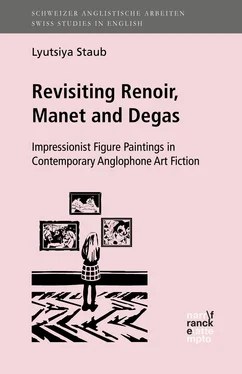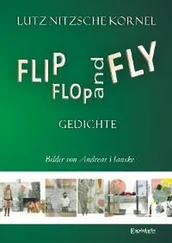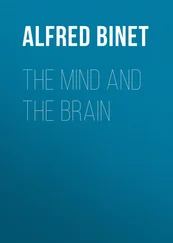In fact, media inevitably channel and shape information, and in the process of communication this is as relevant for the sender as for the recipient. From the point of view of the sender, this shaping quality of media manifests itself in the fact that, with reference to similar contents, different media can function as limiting filters but can also provide powerful extension and intensification. From the point of view of the recipient, media possess tendencies that prestructure certain expectations. Thus one will not always expect illustrations within the covers of a new novel but would be surprised if a film consisted entirely of moving pictures, sounds and music without verbal text. This shows that media function not only as a material basis for transmission purposes but also as cognitive frames for authors as well as recipients and are therefore not merely a neutral means of communication but, indeed, part of the message itself. (“Relevance of Mediality and Intermediality” 22)
Hence, the value of the form of the medium is enormous; it constructs, develops and regulates the meaning: “Form is constitutive of content and not just a reflection of it” (Eagleton 67). By merging different semiotic forms, the sender transfers the meaning from one semiotic system into another and by doing so disrupts the conventional homogeneous practice of producing meaning; this, in turn, is relevant to each of the forms independently, and bewilders the receiver by applying heterogeneous or multiple perspectives to the construction of meaning. Albers points out that
[…] uniting word and image and merging them into a new type of work will at first have a confusing and even defamiliarising effect on the reader, an effect that will eventually be evened out when new meaning is created from the merged product. This new meaning is unique and impossible to construct from non-intermedial works, which points at the salient possibilities that intermediality can provide. (19)
However, the combination of the verbal and visual elements has not always been treated as a mutually profitable alliance. The most eminent supporters of the idea of disruption of the unity of arts are known to be Leonardo da Vinci (c. 1482) and Lessing (1766). Both set clear limits to the verbal and the visual: da Vinci delineates an opposition of eye and ear; Lessing suggests the dichotomy of space and time, which correspond to painting and literature respectively. Their oppositions contradict Horace’s tradition of ut pictura poesis (“as a painting, so a poem”) and, as a result, deny analogies between painting and literature. Moreover, da Vinci and Lessing believe in the inferiority of one of the arts to another – da Vinci subordinates literature to painting, whereas Lessing subordinates painting to literature. The latter refers to the visual arts as fundamentally spatial in that their “signs or means of imitation can be combined only in space” (Lessing 90). Furthermore, he defines the verbal arts as fundamentally temporal due to the fact that their signs “can express only objects which succeed each other … in time” (90). In other words, the natural barrier between visual arts and literary texts is manifested through the unequal nature of the method of the perception of ultimate artefacts. In effect, one is perceived simultaneously in space, the other successively in time. Although Lessing’s distinction between space and time has been challenged by a number of art critics and art historians, its validity cannot be denied – one art can never faithfully mirror another: “Writing cannot represent the visible, but it can desire and, in a manner of speaking, move towards the visible without actually achieving the unambiguous directness of an object seen before one’s eyes” (Said 101). Speaking to the profound difference between words and images, Mitchell sees their relationship as essentially paragonal , a contest for dominance between the visual and verbal arts:
[D]ifferences between words and images seem fundamental. They are not merely different kinds of creatures, but antithetical kinds. They attract to their contest all the dualism that takes as one of its projects a unified theory of the arts, an “aesthetics” which aspires to a synoptic view of artistic signs, a “semiotics” which hopes to comprehend all signs whatsoever. […] Words and images seem inevitably to become implicated in a “war of signs” (what Leonardo called a paragone ) in which the stakes are things like nature, truth, reality, or the human spirit. (1)
Comparative work in the field of intermedial studies of literature and art aims to breach the historical boundaries between verbal and visual arts by focusing on the complementary function of different forms of art. As Mukařovský notes: “the real development of art shows that every art sometimes strives to overstep its boundaries by assimilating itself to another art” (207). Even if arts do not assimilate to one another, they do complement each other by offering new productive approaches and additional resources, thus enriching each other. Unity and complementary interrelation of arts is what interests Hagstrum, who uses the metaphor of kinship when referring to word and image relationship as sister arts . By the same token, Meyers points out the advantages of aesthetic analogies between literature and the visual arts:
Aesthetic analogies express this inherent relationship of the arts, and add a new dimension of richness and complexity to the novel by extending the potentialities of fiction to include the representational characteristics of the visual arts. The novel is essentially a linear art, which presents a temporal sequence of events, while painting fixed reality and produces simultaneity of experience. Evocative comparisons with works of art attempt to transcend the limitations of fiction and to transform successive moments into immediate images. (1)
Although both painting and text may recount stories, the key difference between visual and verbal forms of representation remains. While a painting is capable of visualising subject matter and transmitting its basic content by illustrating detectable objects, a literary text commits to commenting on and interpreting their meaning by contextualising these objects in narrative through the use of ekphrastic descriptions. Even though an image suggests a narrative interpretation through its title, such an interpretation is fairly limited. A verbal representation of the image, on the other hand, allows it to be read narratively; that is, it provides information about the scenery, depicted details or models, their relationship, their life before, during and after the sitting, their reaction to the artwork and the artist’s intentions. As such, the text provides the image with an extended storyline that, instead of being guessed at, develops temporally. Wagner argues that to a reader a painting will “always be more attractive than a text; and yet in order to mean something, it needs mendacious and/or distorting words: a title, an epigraph, a signature, an ekphrasis” ( Icons – Texts – Iconotexts 31). Hence, ekphrastic continuation of the story of a painting allows paintings to trespass the spatial-temporal border and turns them into “new verbalised intermedial products” (Albers 22). An implication of the synthesis of two such media, therefore, offers the possibility of a direct encounter between – and open interaction among – spatiality and temporality. Of course, the nature of a given intermedial product, as well as its effect on the reader, may be qualitatively different, depending on how the visual artforms are manifested within a literary text.
First and foremost is the question of whether an artwork referred to in any given text is real or fictional, in other words, whether the text can be supplied by a reproduction of a given image or not. The re-presentation of an existing piece of art might trigger the reader’s curiosity to consult the image (by flicking through the pages to find the reproduction, looking at the book cover, if it contains the image, or even viewing a reproduction of the painting online), which would naturally increase the intensity of intermedial experience. Then again, the way the painting is re-presented in contemporary art fiction – be it through direct or indirect referencing, through the selection, association or interpretation of an artwork, or through individual, complimentary or collective relationships that the artwork develops with other art objects mentioned in the text – influences the level of intermedial sophistication. Indeed, the aesthetic experience of an intermedial hybrid will bear little or no resemblance to the isolated experience of either just looking at a painting or reading a narrative text. New meaning emerges from the combination of two different semiotic systems. According to Albers:
Читать дальше












